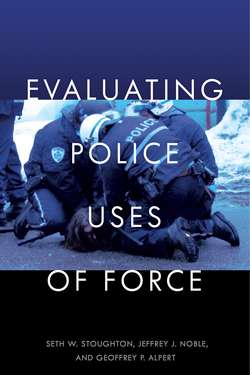Читать книгу Evaluating Police Uses of Force - Seth W. Stoughton - Страница 23
На сайте Литреса книга снята с продажи.
Active Resistance and Attempts to Evade Arrest by Flight
ОглавлениеLike the first Graham factor—the severity of the crime—the third factor implicates the government’s interest in detecting, investigating, and apprehending criminals. The government has an interest in investigating individuals whom officers reasonably suspect are involved in criminal activity and in apprehending individuals whom officers have probable cause to believe committed a crime. Those interests are frustrated when an individual successfully resists or flees from officers. Thus, to protect the government’s interests in investigation and apprehension, officers may use force to overcome resistance, including to prevent escape. The relevant question, then, is twofold: First, whether the government has an interest in detaining or apprehending the individual in question in relation to a crime. Second, whether the individual’s actions create a realistic possibility that the subject will avoid detention or apprehension.
As with threats to officer safety, officers need not wait until a subject’s resistance or flight is fully manifested before using force to address it. At the same time, however, the risk of resistance or flight by itself does not justify the use of force—there must at least be an articulate threat of resistance or flight, if not actual resistance or flight. In that vein, it is important to note that purely verbal resistance—statements indicative of noncompliance—do not constitute a threat of active resistance or attempts to evade arrest by flight. Such statements can indicate that there is a risk that the individual may resist or flee, of course, and officers are free to address that risk using a range of non-forceful options including conflict avoidance and violence-reduction techniques, alternatives to force, or tactical options that may mitigate the risk and avoid the potential threat of resistance or flight. They cannot, however, use force until there is a threat or manifestation of active resistance.
Articulating an individual’s active resistance or attempt to evade arrest by flight requires officers to explain how the individual physically resisted or attempted to flee. Relevant observations include, but are not limited to:
The subject’s conduct, including verbal statements and specific movements (body language);
The subject’s apparent physical condition (age, size, strength, apparent skill level, physical condition such as injury or exhaustion, etc.);
The subject’s apparent mental condition (the apparent influence of mental illness, drugs, or alcohol, for example);
The degree to which the subject has been effectively restrained and their ability to resist or flee despite being restrained;
The degree to which the subject’s movement has been limited even when the subject has not been restrained (e.g., whether the subject is seated, surrounded by officers, etc.);
The environmental options that would enable or restrict flight; and
Prior contacts with the subject or awareness of any propensity for resistance or flight.
As a reminder, the sole focus at this point in the inquiry is the binary question of whether there is a governmental interest. Only when the presence of a governmental interest is confirmed does one continue the analysis by weighing the relative strength of the governmental interest against severity of the officer’s use of force.
